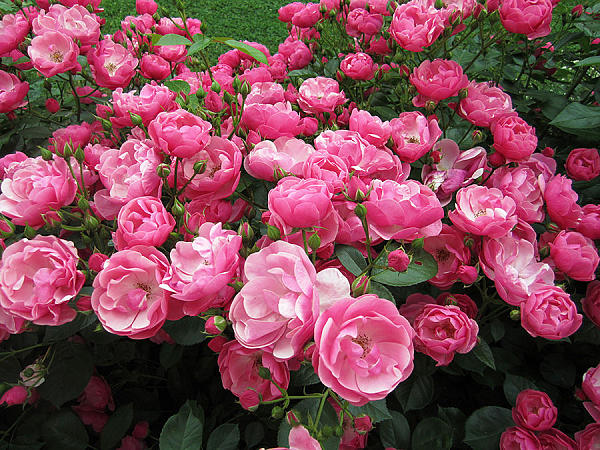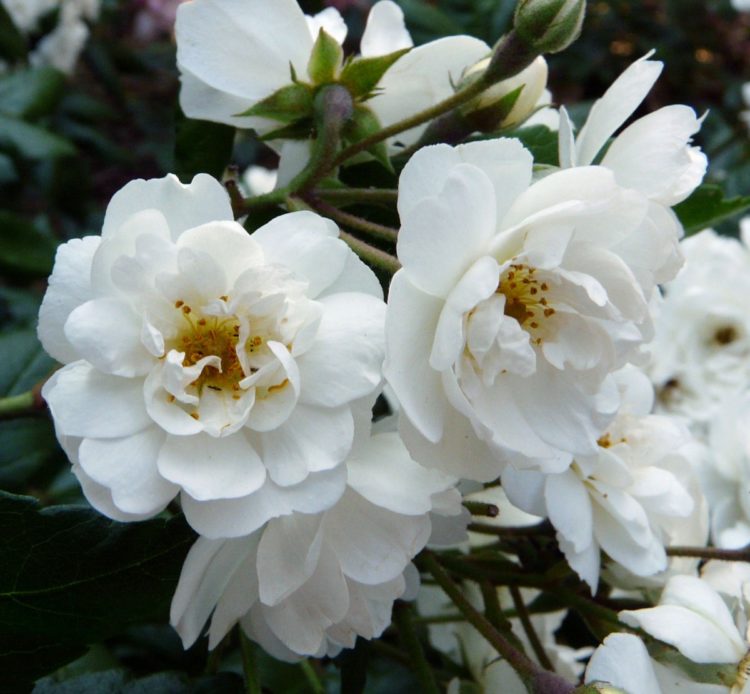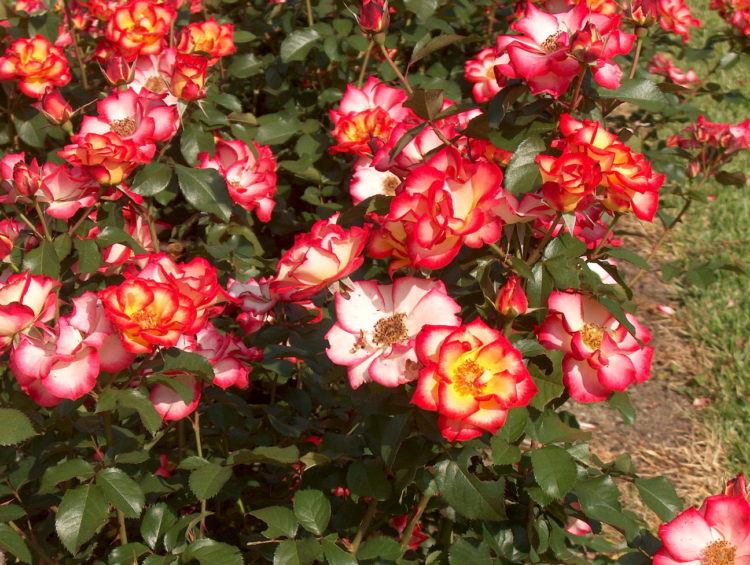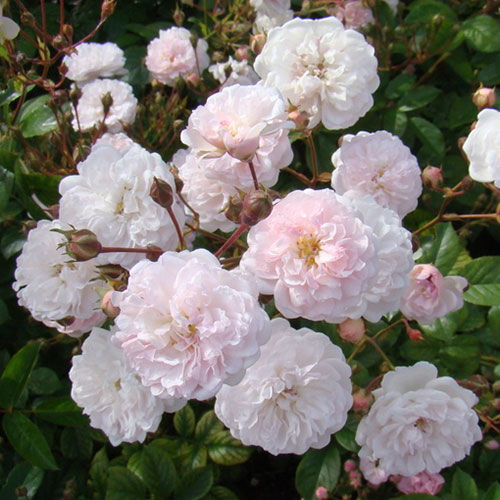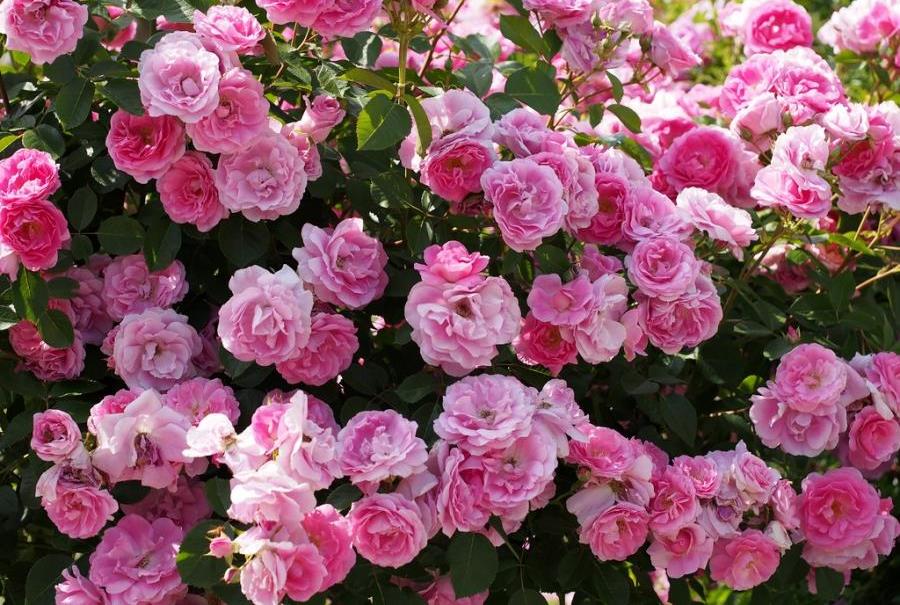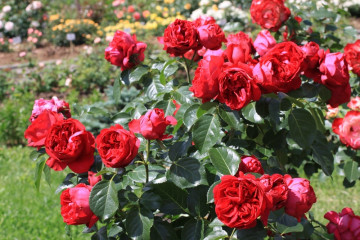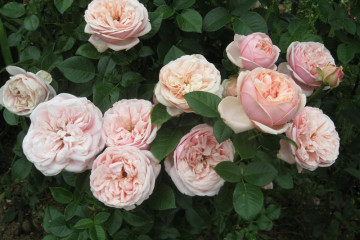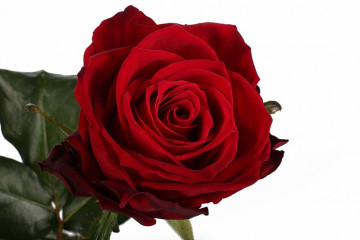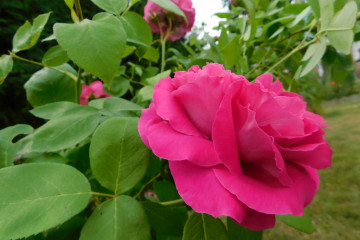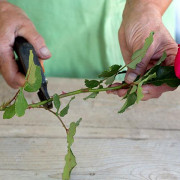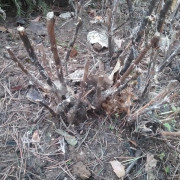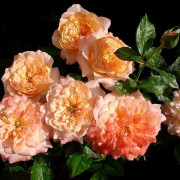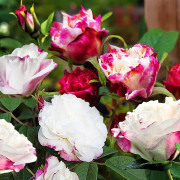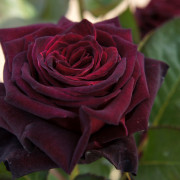Rose Ballerina and other musk varieties with description
Content:
Musk roses are not so common due to medium-sized semi-double flowers and do not look so luxurious against the background of classic roses. However, when used correctly, they will show their best side.
Musk rose - what is it
Musk rose is a class of roses that unites several hybrids. The rich scent combines the aromas of honey, cloves and fruits. In a musky rose, the scent does not come from the petals, but from the stamens, and the scent is heard even at a great distance.
Brief description, characteristic
Musk varieties bloom profusely, most often leaves are not even visible under the flowers. The second bloom is more lush than the first, the flowers are semi-double or non-double. The rest period between flowering is short, so most varieties can be called continuously flowering.
Advantages and disadvantages
Of the positive qualities of musk roses, the following are distinguished:
- abundant lush flowering;
- unpretentiousness;
- resistance to many diseases;
- frost resistance;
- durability.
Among the shortcomings, only a nondescript type of inflorescence can be distinguished. There are no problems in cultivation and care.
Use in landscape design
Musk rose bushes grow to a large size, and their shoots gently droop down. Therefore, even alone, the plant will look noble. On a large lawn area, you can plant several shrubs of the same variety, for example, Ballerina roses. They also look good on retaining walls.
Some varieties can be used as climbing plants, and professional flower growers often plant roses on weeping plants.
Varieties of musk roses
In appearance, the representatives of the musk are very different.
Ballerina
The height and diameter of the Ballerina rose is 1.5 m, the flowering is abundant and long, the shoots are resistant to diseases. The plant is distinguished by a large number of simple flowers, the flowering of which lasts until late autumn. The color of the petals of the ground cover rose Ballerina is pink with dark edges, there is a white eye inside. The variety is shade-tolerant.
It is believed that the park rose Ballerina should be attributed to the Shrub class, whose representatives are semi-leafy and have powerful tall shrubs.
Mozart
The maximum height of the shrub is 3 meters, the leaves are small, can be used as climbing. The flowers are white-pink, cherry or purple at the edges, the center is white, over time the petals fade to almost white. Each brush has 20-50 non-double fragrant flowers.
PaxPax
Spreading shrub, shoots grow up to 4m, which can be wrapped around the supports. A distinctive feature is the elongated white buds on elongated pedicels. Semi-double flowers, wheat stamens are visible inside. Under favorable conditions, up to 30 flowers can grow in a cyst.
Cornelia
The shrub is low, reaching a height of 1.2 m, but thanks to its branchy shoots, it has a fountain-like shape. Shoots grow up to 1.75 m in length, they are covered with velvet red-crimson flowers, spherical inflorescences.
Rose Lensa
Rose Lens has several varieties and can have white, yellow or pink petals. Shoots are long, weaving. The buds are actively developing and bloom magnificently throughout the season, racemose inflorescences.
Other varieties
You can decorate the garden with other equally popular and beautiful varieties from the encyclopedia:
- Felicia;
- Buff Beauty;
- Bouquet Parfait;
- Neige dEte;
- Alden Biesen;
- Bukavu;
- Dinky;
- Havenly Pink;
- Schwerin;
- Moonlight.
Growing a flower, how to plant it in open ground
For successful cultivation, you need to know how and when to plant a shrub and how to properly care for it.
In what form is the landing
To preserve varietal characteristics, seedlings purchased in specialized stores are used. Even self-harvested seeds do not guarantee a hybrid musk rose.
What time is the boarding
Roses are planted during the warm season, when there is no threat of frost. It can be both spring and autumn. Planting in summer is possible if the plant has a closed root system.
Location selection
Musk rose hybrids love well-lit areas. The sun's rays should not fall on the plant all the time, in the afternoon it is desirable that the place be shaded. If possible, the bush is planted on a hill.
How to prepare the soil and flower for planting
The planting hole should be allowed to stand for several weeks. A hole is dug with a diameter and depth of 1.5 m, drainage and a compost layer are laid. For 1 bush, 1 bucket of sand, 2 buckets of peat, 3 buckets of leafy earth are taken. If there is no extra time, the bottom is simply compacted to avoid shrinkage of the bush.
Planting procedure step by step
Musk rose seedlings are planted as follows:
- A landing pit is being prepared.
- Watering is in progress.
- A seedling is being established.
- The pit is covered with garden soil.
- Watering is in progress again.
- The stem is huddled, mulch from humus or mowed grass is laid.
Plant care
The health of the rose will be supported by regular weeding, loosening the soil, feeding and pruning. In the first year of life, the buds are removed from the plant; in August, 2 flowers are left on each shoot.
Watering rules and humidity
During the growing season, the soil must be constantly moist. In the absence of precipitation, watering is carried out 2 times a week.
Top dressing and soil quality
The rose grows well in ordinary garden soil, but responds to fertile soil with more lush flowering.
Fertilization scheme:
- Early spring - a mixture of 1 tbsp. a spoonful of ammonium nitrate per 10 liters of water.
- Two weeks later - a mixture of ammonium nitrate or urea in the same proportion.
- The beginning of budding - 1 tbsp. a spoonful of calcium nitrate per 10 liters of water.
- After 10 days - dissolved mineral fertilizer with microelements.
- Vegetation period - application of organic and mineral fertilizers every two weeks.
- End of August - 1 st. a spoonful of superphosphate in 10 liters of water and 1 tbsp. a spoonful of potassium sulfate per 10 liters of water.
Nitrogen and mineral fertilizers are supported by adding a solution of albumin to the soil in the amount of 1 tbsp. spoon in 10 liters of water or infusion of a cowshed in a ratio of 1:10.Less commonly, an infusion of chicken manure in a ratio of 1:20 or an infusion of fermented herbs is used.
Pruning and replanting
The nutmeg rose only requires sanitary pruning. This is due to the fact that the buds are formed on the branches of the second and third order, which are formed on old shoots.
Features of wintering a flower
An air-dry shelter is made for the winter. The stem is covered with sand by 30 cm, the shoots are covered with spruce branches, the foliage is cut off, the bushes are processed with 300 g of ferrous sulfate per 10 liters of water. A frame with a stretched insulation and plastic wrap is installed.
Without shelter, the rose can tolerate temperatures down to -7 ° C.
Blooming rose
Inflorescences are formed on biennial and older shoots.
The most magnificent flowering is observed during the second wave, when lateral shoots appear on the basal shoots, which also bloom.
The rest period ranges from several days to several weeks, depending on the variety.
Care during and after flowering
During the period of budding and flowering, the Ballerina rose, like other varieties, needs potassium. A mixture of 1 cup of wood ash per 1 bucket of water or 30 g of potassium sulfate is added to the soil also per bucket of water.
For lush flowering, you will also need a solution of 1 tbsp. tablespoons of calcium nitrate per 10 liters of water.
What to do if it does not bloom, possible reasons
The rose does not bloom with a lack of sunlight, watering and feeding. Flowering can most often be achieved by changing the conditions of care.
Flower propagation
At home, the rose propagates by cuttings, layering, dividing the bush. Experienced flower growers graft a rose to a rosehip.
When is it produced
Cuttings are harvested after the first flowering. Strengthened shoots of adult trees are used.
Detailed description of the breeding process
Cuttings up to 8 cm long are cut, the lower leaves are cut off. The cuttings are soaked for 20 hours in a root growth stimulator, after which they are washed with running water and planted in the ground with sod-humus soil and a layer of sand with peat.
Cuttings are planted at an angle of 45 °, a glass or film greenhouse is installed.
For propagation by layering, the lower one leans towards the soil, and the middle is sprinkled with earth. Once the rose takes root, it can be separated from the mother plant.
Diseases, pests and ways to control them
Musk roses have good immunity and rarely get sick. When powdery mildew appears, the plant is treated with a fungicide. If caterpillars or aphids are found, insecticides are used.
Not all growers have had time to appreciate the musk rose. However, its lush bloom and captivating sweet scent of musk will not leave indifferent the owners and guests of the house, so it is worth taking the time and paying attention to it.
